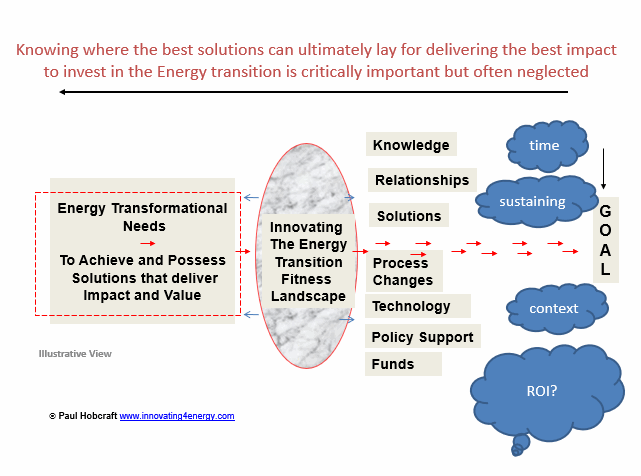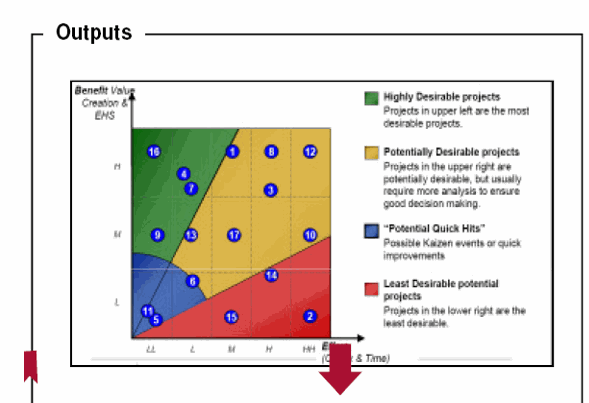 I am looking at the Energy Transition from an evolving technology innovation perspective. In other words, what “forces” can be identified or promoted that can transform the existing energy system through the pursuit of the new invention, innovation, or technological advancement.
I am looking at the Energy Transition from an evolving technology innovation perspective. In other words, what “forces” can be identified or promoted that can transform the existing energy system through the pursuit of the new invention, innovation, or technological advancement.
Specifically, the ones that will be needed over such an extended time and complexity of change that this Energy Transition will take upwards of twenty to thirty years to give it an unstoppable momentum.
I have been building out the value in my proposal of having a Fitness Landscape framework within the Energy Transition and why it makes sense.
Here in this post, I want to expand my thinking around navigating a complex landscape that the Energy Transition demands.
When you look through the lens of innovating at the Energy Transition, you often question the fitness or the reality to achieve something.
A risk of the energy transition is we give higher emphasis on the depth of knowledge in one area and fail to pull this together, to map it into the bigger picture of the practical, broader-based one.
This “mapping back” gives our broader Society and non-expert groups needing to relate to the Energy transition gives them identification. It generates their need to change or support change and brings about more extensive (behavioural) change and awareness. Otherwise, they just accept the idea of advancement but equally block it if it does not fit their frame of thinking or how or why it is relevant to them.
The value of fitness landscapes as part of any Energy Transition awareness makes sense to bring identity and structure.
Let me explain this by keeping Hydrogen as the initial focus:
I have taken Hydrogen as my opening exploration to traverse this Energy landscape
I need to begin to evaluate the value of knowing the real part of any hydrogen ‘fitness’ and what makes up the distinctive dynamic capabilities that move it towards the solutions we need to have to contribute in significant ways to the energy transition underway.
These solutions can be, but not limited to, Technology and Innovation, Scale and Adoption, Infrastructure and Market Conditions, Government Engagement and Involvement, Industry, and critically vital Public adoption.
We need to visualize and articulate change in connecting ways.
I believe both the Three Horizon framework that I have deployed for years (see this post for relating it to the energy transition) and the concept of knowing your fitness and the landscape have real value in the Energy Transition.
Both methodologies allow for a greater collective identity and engagement of all the necessary expertise and generalists to come together. In a complex challenge like the Energy Transition, you need to create the identification and build the collaborative ecosystem to focus resources on the (shared) identified goals.
Taking Hydrogen as my point of reference to understand the context, complexities, and creative tension.
By firstly, mapping out the hydrogen terrain to the task at hand enables us to understand and relate to what is needed – I call that the context for change. I have been investigating Hydrogen as a promising energy carrier to understand the barriers and obstacles to the energy transition we need to undertake. There are so many underlying “tensions” in this change from established fuels, infrastructure, and product delivery that Hydrogen needs to overcome.
Taking this fitness landscape thinking a little further here.
Any Energy Transition Fitness Landscapes identifies the opportunity spaces for focusing your efforts- the appropriate resources to navigate the terrain. The higher the ‘fitness’ transforms your landscape potential into accelerating opportunities into final tangible outcomes.
Fitness Landscapes helps in this task by identifying the opportunity spaces on where you need to focus your efforts‐ and apply the appropriate resources to navigate the terrain. A greater understanding of the ‘fitness points needed’ can transform your hydrogen landscape potential or achieve your goal in business parlance.
Mapping out your capabilities, competencies, and capacities to the task at hand enables you to understand and relate to what is needed. You begin to get fit for the journey ahead.
I took what I call a “Fitness Landscape Result Expectancies” approach.
Fitness Landscape Result Expectancies
My approach here is a work-in-progress; it will evolve and adapt depending on interest and demand.
These are my “first pass thoughts” of the expected results or points of investigation sought, by identifying the critical aspects of capability identification for the Hydrogen (or any energy transformation journey), to make it a significant contributor to the Future Energy Mix.
We need to appreciate or consider the following as principles or guidelines:
- A greater understanding of the obstacles and barriers to Hydrogen becoming a significant energy carrier in the future energy mix is critical to understand. It “conveys” the fitness landscape journey.
- Understanding what needs to be changed moves Hydrogen towards an energy transition that is sustainable and evolutionary built on technology investigation, validation, and ability to scale. Solutions gain worldwide—Recognition and adoption as the resulting outcomes and processes from discovery to realization.
- The journey generates a learning process for the identification of real and ‘false’ dynamic capabilities. Dynamic capabilities bring about change in the environment. As we frame, we can identify differences separating the more static ones that often just need reinforcement or retirement as not of lasting value.
- Pursuing limited or ‘selective’ development allows for restrictive exchanges within a network of specialization. These will not have the desired effect to accelerate solutions that can replace the existing ones unless the broader network effects are not accounted for.
- Any fitness landscape journey, where change is a significant requirement, requires a holistic view of the existing issues and the intent and goal of the journey by framing a clear strategic plan to mobilize the necessary forces.
- The solutions suggested will draw out internal discussions, growing recognition, and reality of the present and future needs in this area of resource allocation and capital allocation.
- Importance of linking capability across different activities or technology applications to become increasingly ‘dynamic’ for a more sustainable future.
- The ability to build out a clear capability portfolio knowing where resource needs to be applied and their likely timeframe from concept to fruition. These evaluations will also help identify synergies to bring new value and future impact options.
- We need to challenge long, well-established routines and processes to see how we can extend technology options. To discover and continue the existing can be valuable to place additional resources behind.
- Having clarity in the fitness landscape allows for regularly taking additional “adaptive walks” to learn and adjust current thinking and question alternatives more openly.
- Knowing your capabilities, competencies, and capacities become important, so this understanding intensifies and equally solidifies the studies through constantly challenging and questioning the investigation and landscape model.
Outcomes from these expected results raise dynamic capability and the importance of dynamism for more flexibility and fitness discovery. By identifying higher points of value, you accelerate the change process and plot different projects and their impact. You have greater confidence in where to invest new capital and resources.
Looking for outcomes and outputs.
I am building this into a workable model because it first extends on my previous work in Innovation Fitness Landscapes, and it takes out my focus on the Energy Transition.
Within this adaptive approach to the Energy Transition, we can seek out and determine the Energy Fitness Landscape to then determine where the critical focal points are so the necessary resources and capital can be applied.
I want to identify the necessary capacities, competencies, and capabilities to undergo this journey. Its ultimate aim is to identify outcomes that can become ones that focus on knowing which are valuable.
Also, which aspects need to be extended and accelerated that build on the existing solutions and gives us the decision points to let go of projects or concepts with limited or no value. Those resources and capital should be released to be redirected onto the ones that hold promise, impact, and value.
The energy complexities do need understanding, explaining, and mapping. How will the traversing be undertaken to get to the end goal of a clean energy system as soon as we often need different articulation?
Fitness landscapes help make the journey a lot easier to determine what is needed to undertake it. It is a dynamic process that stays ‘evolving.’
- A revised post from the one originally published on my paul4innovating.com site.


